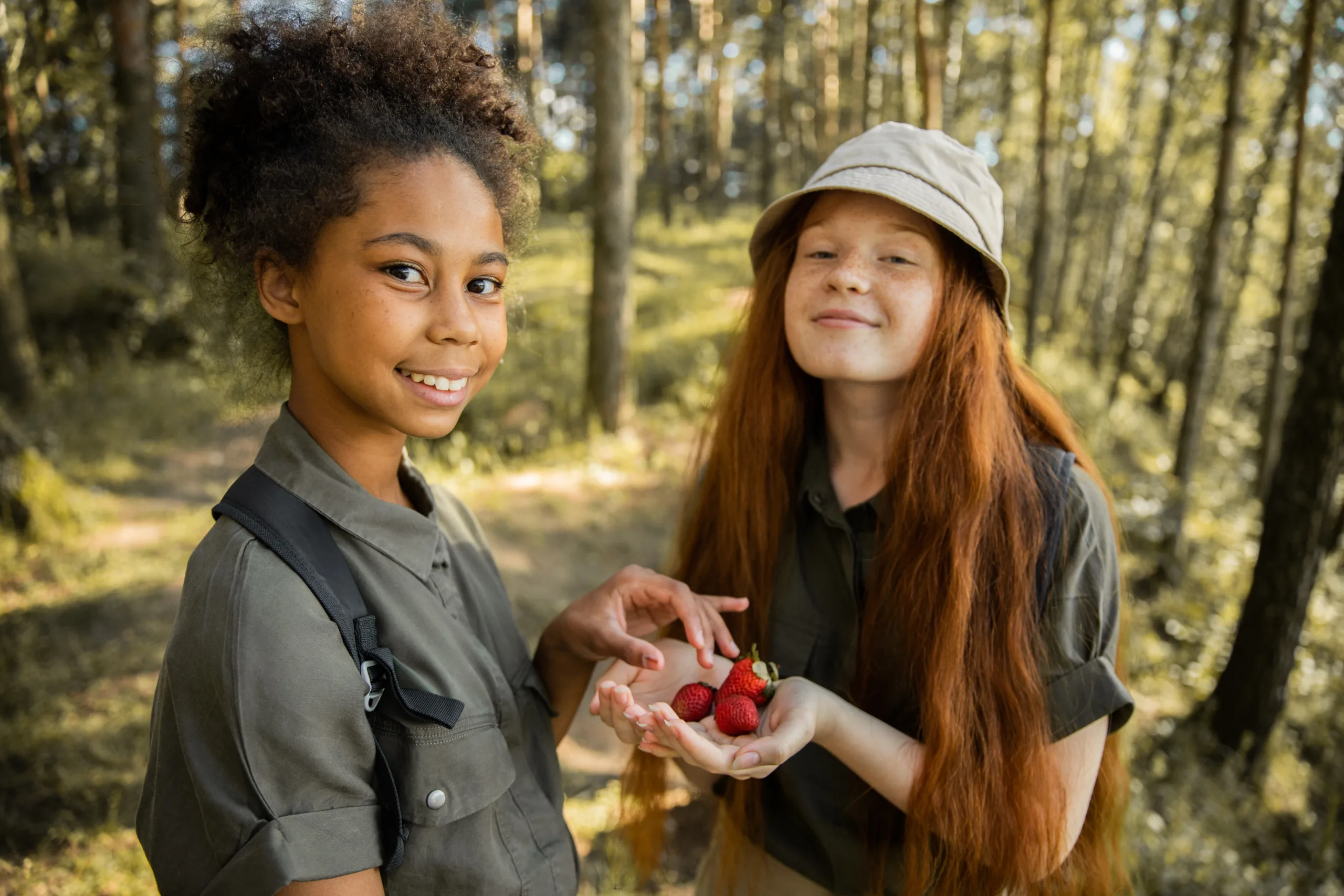Fruit trees are a great addition to any garden or landscape, but you may be wondering how long it will take for your trees to bear fruit. If you have recently planted a tree and are hoping for some delicious fruit this season, you’ll want to know the answer to this question.
The amount of time it takes for a tree to bear fruit depends on the type of tree you have planted, as well as the climate, soil, and other environmental factors. In this article, we’ll explore how long different types of fruit trees typically take before they begin producing delicious fruits. We will also discuss other factors that can impact the amount of time it takes for a tree to bear fruit.
Whether you are looking for apples, oranges, lemons, or some other type of fruit, understanding how long it will take your specific tree to produce can help you plan and prepare for your harvest. Knowing when to expect your first crop can help ensure that your trees remain healthy and productive in the years ahead.The time it takes for a tree to bear fruit can be affected by a number of factors, such as the type of tree, the climate and growing conditions, the age of the tree, and the care it receives. For example, some varieties of fruit trees may take longer to reach maturity than others; trees grown in climates that are too hot or too cold may take longer to bear fruit; younger trees may take several years before they begin to bear fruit; and proper pruning and fertilization can help encourage earlier fruiting.
Average Time To Expect Before Fruit Production
Fruit production is a process that takes time and effort to achieve. Depending on the type of tree or bush, the amount of time it takes for fruit production can vary greatly. Generally speaking, most trees and bushes will begin to produce fruit within two to three years after planting. Some trees may take even longer depending on the species and growing conditions.
Once the tree or bush has started producing fruit, it is important to continue caring for it in order to ensure that it produces an abundant crop each season. This includes pruning, fertilizing, watering, and controlling pests. Proper care will help ensure a good harvest each year.
In some cases, such as with citrus trees, multiple harvests may be possible throughout the year depending on climate and weather conditions. Citrus trees are one of the fastest-producing trees when grown in ideal conditions, often producing fruit within one year after planting.
When planting any type of tree or bush for fruit production, make sure to choose a location that receives enough sun and has adequate drainage for optimal growth. Additionally, be sure to select varieties that are suited for your climate zone in order to ensure successful growth and fruitful harvests from year to year.
Overall, while there is no exact timeline for when you can expect fruit from your plants or trees, most should begin producing within two to three years after planting if given proper care and attention. Proper selection of varieties and locations as well as regular maintenance will help ensure an abundant harvest each season.
Maximizing Sun Exposure
One of the most important factors in promoting quicker fruit production is maximizing sun exposure for the plants. It is important to ensure that the plants receive as much direct sunlight as possible. This can be done by planting the trees in a location with plenty of sunlight, and pruning any branches or foliage that may be blocking the sunlight from reaching the tree. Additionally, it is also helpful to provide some kind of shade protection from intense heat during peak hours.
Ensuring Proper Watering
Another important factor in promoting quick fruit production is ensuring proper watering. Overwatering is just as detrimental to fruit production as underwatering, so it is important to find a balance between the two. It is also beneficial to create a schedule for watering that takes into account things like seasonal changes and weather patterns. Additionally, it is important to make sure that any water used on the plants is free of contaminants and pollutants that could potentially harm them.
Providing Nutrients
In addition to adequate sunlight and proper watering, providing adequate nutrients for healthy fruit production is essential. This can be done through the use of organic fertilizers or soil amendments such as compost or manure. Additionally, adding mulch around the base of the trees can help retain moisture and provide additional nutrients over time.
Using Disease-Resistant Varieties
Using disease-resistant varieties of plants can also help promote quick fruit production by reducing potential losses due to disease or pests. There are many varieties of fruit trees available that have been bred for disease resistance and other desirable traits such as increased yield or improved flavor profiles. Researching these varieties before planting can help ensure success when it comes time to harvest.
Practicing Proper Pruning
Finally, practicing proper pruning techniques on a regular basis can help promote quicker fruit production by encouraging healthy growth and allowing more sunlight and air flow into the tree canopy. Pruning should be done carefully, making sure not to remove too many branches at once and only pruning those branches which are necessary for optimal health and vigor.
Nutritional Requirement of Trees To Bear Fruit
Fruits are the product of trees and it is important for a tree to get all the necessary nutrients to produce them. Nutrients are essential for the health and growth of trees, as well as for producing fruits. Trees need a balanced diet of macronutrients like nitrogen, phosphorus, potassium and micronutrients like calcium, magnesium and boron.
Nitrogen is important for leaf growth and provides energy to the tree. Phosphorus helps in root development and flowering. Potassium aids in photosynthesis, enhances drought tolerance and increases fruit yield. Calcium helps with cell wall formation, strengthens cell walls and increases water uptake by plants. Magnesium helps in chlorophyll production which is essential for photosynthesis. Boron helps in cell wall formation and also aids in pollination.
Apart from these macronutrients and micronutrients, trees also need trace elements such as iron, zinc, manganese and copper to survive. Iron is important for chlorophyll production while zinc promotes flowering, seed production and fruit set. Manganese plays an important role in photosynthesis while copper helps with enzyme activation which accelerates growth processes.
In order to bear fruits successfully, trees must be provided with all these essential nutrients in adequate amounts so that they can produce healthy fruits with good taste. It is also important to maintain the pH level of soil around the tree which should not be too high or too low as this can affect nutrient uptake by plants adversely leading to poor crop yields.
Soil Conditions That Affect Fruit Production
Soil is an important factor in the quality and quantity of fruit production. Different soil conditions can have an impact on the growth and production of fruit trees. In order to maximize fruit production, it is important to understand the different soil conditions that affect fruit production.
The first factor that affects fruit production is soil texture. Soils with a high proportion of sand will often be more free-draining, while soils with a higher proportion of clay tend to hold more water and be less accommodating for plant roots. The second factor is soil fertility, which is determined by the amount of organic matter and nutrients in the soil. Fertile soils will produce higher yields as they provide essential nutrients for plants to grow. The third factor is pH level, which indicates how acidic or alkaline a soil is. Soils which are too acidic or alkaline can limit the availability of certain nutrients and should be tested regularly.
The fourth factor affecting fruit production is drainage, which determines how much water can pass through the soil structure. Poorly drained soils are prone to waterlogging, while well-drained soils allow excess water to drain away from plant roots quickly. Lastly, there should be adequate air circulation around root systems for optimal growth and productivity, so it’s essential to avoid compacted soils when planting fruits trees.
Overall, soil conditions play a major role in fruit production. By understanding these different factors and testing soils regularly, growers can ensure that their trees have optimal growing conditions for maximum yields of quality fruits.

Proper Pruning of Trees For Better Fruiting
Pruning is an important part of the routine maintenance of trees, and it’s essential for better fruiting. Pruning helps to maintain the structure and shape of the tree, as well as controlling its size and encouraging new growth. It also helps to improve air circulation and sunlight penetration, which can improve fruiting. Pruning a tree correctly can also help to reduce damage from pests and diseases. In addition, proper pruning can help to improve the overall health of a tree, as well as its productivity.
When it comes to pruning for better fruiting, there are several factors to consider. The most important is timing; pruning should be done in late winter or early spring before buds emerge. This will help ensure that new growth will be healthy and promote efficient fruit production in the coming season. Another important factor is selecting the right type of pruning; when it comes to fruit trees, deadheading or removing dead or damaged branches is essential for encouraging new growth and promoting healthy fruit production.
It’s also important to keep in mind that different types of fruit trees may require different types of pruning techniques in order to achieve optimal results. For example, some trees need more drastic pruning than others; apples, pears, peaches, and apricots all require more intensive pruning than other types of fruit trees such as cherries or plums. Additionally, some types of fruit trees may require special treatment when it comes to pruning; citrus fruits such as oranges and lemons should only be pruned during specific times in order to promote healthy fruiting.
When it comes to actually pruning a tree for better fruiting, there are some basic guidelines that should be followed. First, always use sharp tools when cutting branches; dull blades can cause damage that can lead to disease or pest infestation. Second, make sure that cuts are made at an angle just above a bud facing outwards; this will ensure that new growth follows this direction and helps promote the desired shape of the tree canopy. Finally, try not to remove more than 25% of a branch at once; this can cause shock to the tree which could impair growth and reduce yields significantly.
Overall, proper pruning is an essential part of maintaining any fruit tree and ensuring optimal yields each season. With careful attention paid to timing and technique, any gardener can enjoy bountiful harvests from their own backyard!
Identifying When a Tree is Ready to Produce Fruit
Knowing when a tree is ready to produce fruit can be important for gardeners, farmers, and anyone else who has an interest in trees. There are several factors that can help determine when a tree is ready to produce fruit, including the type of tree, the age of the tree, and the climate. Each factor plays an important role in determining if a tree will produce fruit.
The type of tree is one of the most important factors in determining when it will be ready to produce fruit. Different types of trees have different timetables for when they will be able to bear fruit. For example, apple trees typically take about three to five years before they are able to bear fruit, while cherry trees can take up to seven years before they are able to bear fruit.
The age of the tree is also an important factor in determining when it will be ready to produce fruit. Generally speaking, younger trees may not be well-equipped to handle the amount of energy required for producing fruit while older trees may have lost their ability or vigor for producing fruits. If a tree is too young or too old, it may not be able to produce enough fruits for harvesting or consumption purposes.
Lastly, climate plays a significant role in determining when a tree is able to bear fruits as well. Different climates can affect how quickly a tree matures and therefore how quickly it can bear fruits. For example, warmer climates tend to speed up the ripening process while colder climates tend to slow down this process. It’s important for gardeners and farmers alike to take into account these climatic differences in order for them to get an accurate estimate on when their trees will be ready for harvesting fruits.
In summary, there are several factors that must be taken into consideration when determining if and when a tree is ready to produce fruits. These include the type of tree, its age, and its local climate conditions. By taking all these elements into account, gardeners and farmers alike can get an accurate estimate on when their trees will start bearing fruits and begin harvesting them accordingly!
Fertilizing Trees to Increase Fruit Production
Fertilizing trees can help increase fruit production, but there are a few important considerations to keep in mind when fertilizing. First and foremost, it is important to understand the type of tree and its specific requirements for fertilization. Different species of trees require different types of nutrients in order to thrive, so it is important to select a fertilizer that is specifically formulated for the tree in question. Additionally, it is important to be aware of the soil pH levels and adjust the fertilizer accordingly.
The timing of when the fertilizer is applied is also very important. Fertilizer should only be applied during a tree’s active growing season as applying it at other times can do more harm than good. Applying fertilizer too late in the season can cause excessive foliage growth which can lead to weakened wood and branches that are more prone to breakage during winter storms.
It is also important to use an appropriate amount of fertilizer when applying. Too much fertilizer can cause damage to the tree’s roots and lead to nutrient imbalances. On the other hand, too little will not provide sufficient nutrients for healthy growth and fruit production. Lastly, make sure that any mulch or soil amendments are incorporated into the soil around the tree before fertilization as this will help ensure that nutrients are evenly distributed throughout the area around the root system. By taking these steps into consideration, you can ensure proper fertilization for your trees and an increase in fruit production!

Conclusion
The length of time it takes for a tree to bear fruit depends on a variety of factors, including the tree’s species, environment, and proper care. Trees that are properly cared for in their ideal climate can produce fruit in as little as one year. However, some trees may take up to 10 years or more to bear fruit. For many trees, the process can take anywhere from two to five years.
No matter how long it takes for a tree to produce fruit, the effort and patience required is always worth it. Not only are you rewarded with delicious fruits that you can share with family and friends, but you’re also helping protect the environment by adding another living thing that promotes biodiversity.
With proper care and attention, your trees can bear fruit sooner rather than later. As long as you’re willing to put forth the effort and remain patient throughout the process, your efforts will be rewarded in no time!

My interest in trees started when I first saw the giant sequoias in Yosemite.
I was a teenager then, and I remember thinking, “I need to learn more about this.”
That moment stuck with me.
A few years later, I went on to study forestry at Michigan Tech.
Since graduating, I’ve worked in a mix of hands-on tree care and community education.
I’ve spent over ten years helping people understand how to plant, maintain, and protect the trees in their neighborhoods.
I don’t see trees as just part of the landscape.
They are living things that make a real difference in our daily lives.
